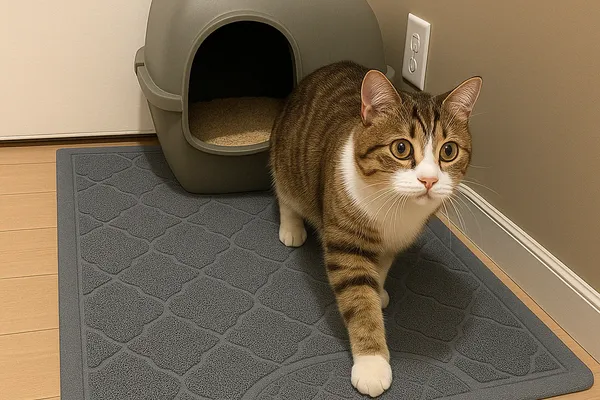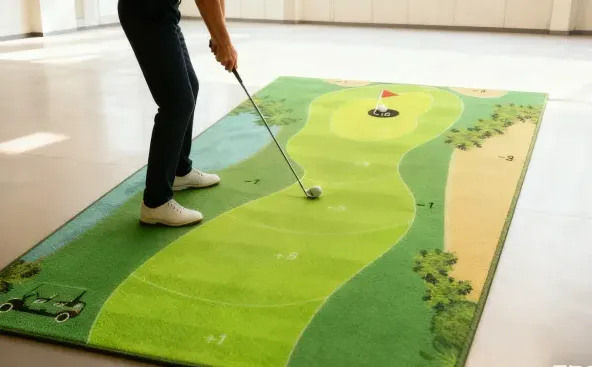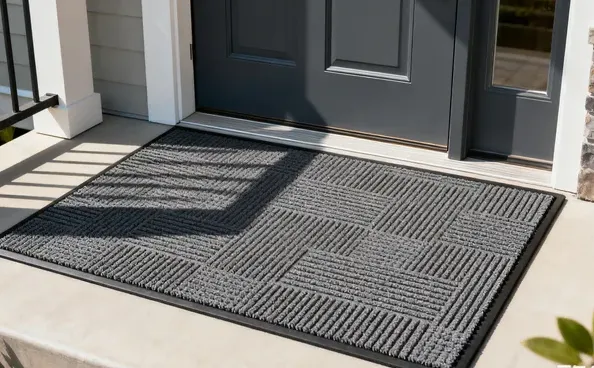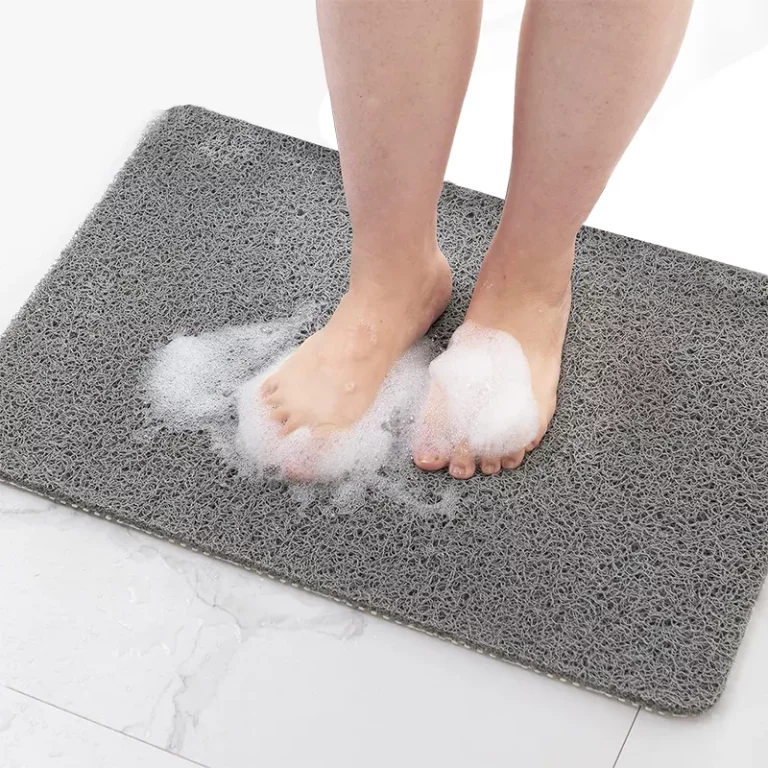Tired of constantly battling the dirt, mud, and grime tracked into your building? Does the never-ending cycle of sweeping and mopping near the entrance feel frustrating, detracting from the clean, professional look you want to present? As custom mats Manufacturing plants for products, we understand that finding a durable, effective, and attractive solution is key to solving this persistent problem and making a great first impression.
Welcome mats are primarily designed to be placed outside the entrance to your home or business. Their core purpose is to act as the first line of defense, providing a surface for people to scrape off dirt and debris from their shoes and boots before entering your home or establishment. While anutdoor mat tackles the heavy-duty cleaning, pairing it with indoor mats just inside the entryway creates the most effective system for keeping your floors clean and protected from tracked-in dirt and moisture. Industry studies suggest that effective entrance matting systems can trap as much as 85-90% of tracked-in debris.
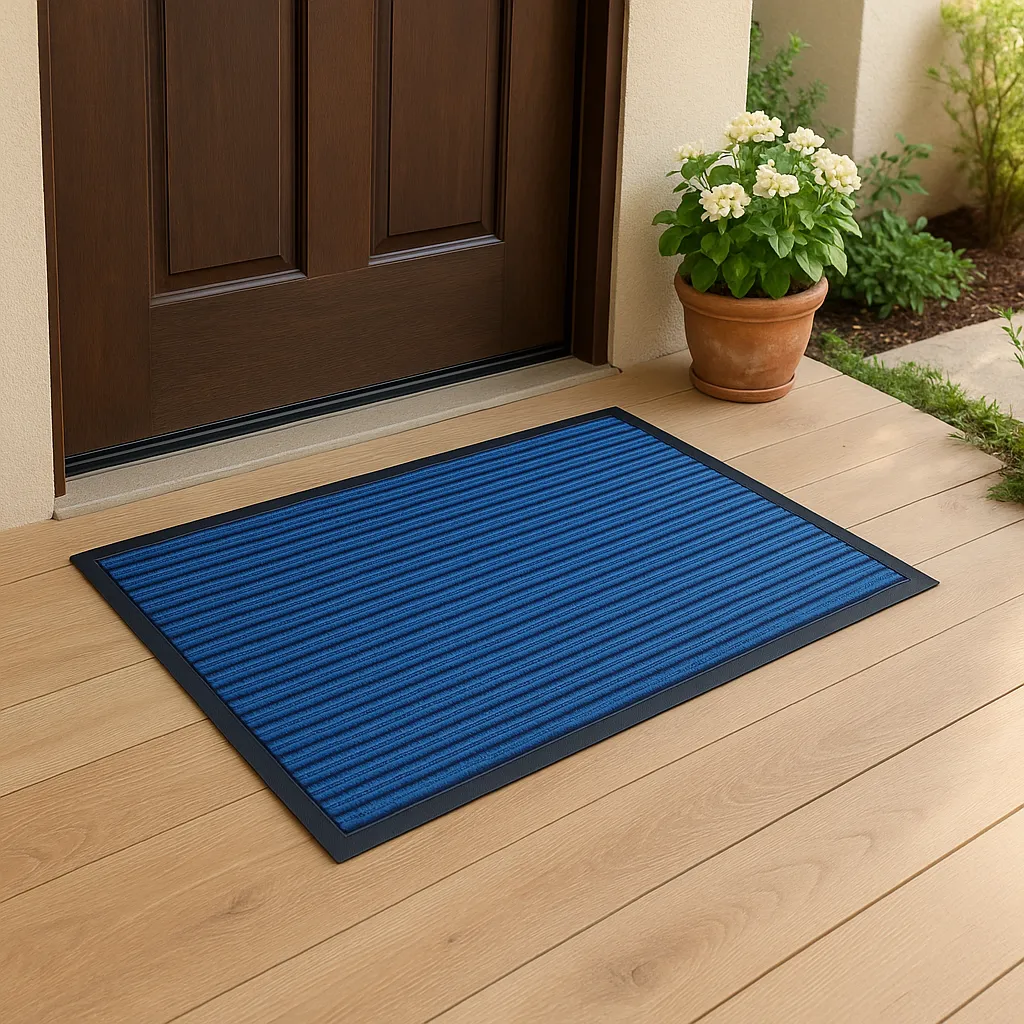
What Exactly is a Welcome Mat’s Primary Job?
At its heart, a welcome mat serves a crucial functional purpose far beyond its greeting. Its primary job is to protect your interior floor coverings. Think of it as a dedicated soldier guarding your home entrance. This humble mat is strategically placed at the entrance to intercept unwanted guests like dirt and debris, mud, sand, grit, and moisture before they get tracked further inside. It provides a designated spot for visitors and occupants to wipe their feet, significantly reducing the amount of outdoor elements that migrate onto your indoor floors. Fact: The Cleaning Industry Research Institute (CIRI) states that about 80% of the soil contaminating a building walks in through the front door on people’s feet!
The effectiveness of a door mat lies in its ability to scrape and trap dirt. A good quality mat will have a texture or material composition designed to physically remove particles from the soles of shoes. Whether it’s coarse coir fibers, raised patterns on a rubber mat, or absorbent fabric, the goal is the same: keep the mess contained at the entrance. This simple function saves considerable cleaning time and helps preserve the condition and longevity of your floor.
Beyond cleanliness, a welcome mat also plays a role in safety. Wet or muddy shoes entering directly onto smooth interior floor surfaces like tile or hardwood can create a slipping hazard. An absorbent mat or one with good scraping action helps dry and clean shoe soles, reducing the risk of slips and falls just inside the door. Therefore, the primary job of this essential mat is a combination of cleaning, floor protection, and enhancing safety at every entrance.
Should Your Main Doormat Be Placed Inside or Outside?
This is a common question, and the most effective answer leans heavily towards placing the primary, heavy-duty doormat outside. The logic is simple: stop the dirt before it even crosses the threshold. An outdoor mat is designed to handle the brunt of the cleaning task – scraping off mud, catching leaves, and absorbing initial moisture. These mats are typically made from tougher, more weather-resistant materials specifically chosen for this purpose. Placing your most robust mat outside the door maximizes its effectiveness in trapping the majority of dirt and debris.
However, this doesn’t mean indoor mats don’t have a place. The ideal scenario involves a two-mat system. While the outdoor mat does the heavy lifting, an indoor mat placed just inside the entryway serves as a secondary barrier. This mat inside is usually designed to be more absorbent, catching any remaining finer particles and soaking up residual moisture from wet shoes that the external mat might have missed. Think about welcome mats go inside as the final polish after the initial scrub outside the door.
So, should mats go inside or outside? The main scraping doormat belongs outside. But for the best results in keeping your floors clean, supplement it with an absorbent mat indoors. This strategy addresses different types of debris and moisture levels, ensuring less dirt makes its way into your living or working space. Choosing the right doormats for your home or business involves considering both locations.
Why is an Outdoor Mat So Crucial for Home Cleanliness?
An outdoor mat acts as the gatekeeper for your home’s cleanliness. Its position right at the exterior door makes it the very first opportunity to stop dirt in its tracks. Without this initial barrier, everything clinging to the bottom of shoes – mud, gravel, grass clippings, sand, salt, snowmelt – gets directly tracked into your home. This not only makes your floor look dirty immediately but can also cause long-term damage like scratches on hardwood or staining on carpets. Consider this: Removing just one pound of tracked-in dirt can cost upwards of $500 in cleaning efforts and floor damage repair over time. The outdoor doormat is your frontline defense against this daily assault.
These mats are specifically engineered to withstand harsh weather conditions and tackle coarse debris. Materials like tough coir fibers, durable rubber, or synthetic scraper surfaces found in options like commercial anti slip outdoor herringbone front door mats are designed to aggressively scrape away mud and dirt from shoes and boots. They often feature textures or patterns that help dislodge particles effectively. An effective outdoor mat significantly reduces the amount of cleaning required indoors, saving you time and effort in keeping your floors clean.
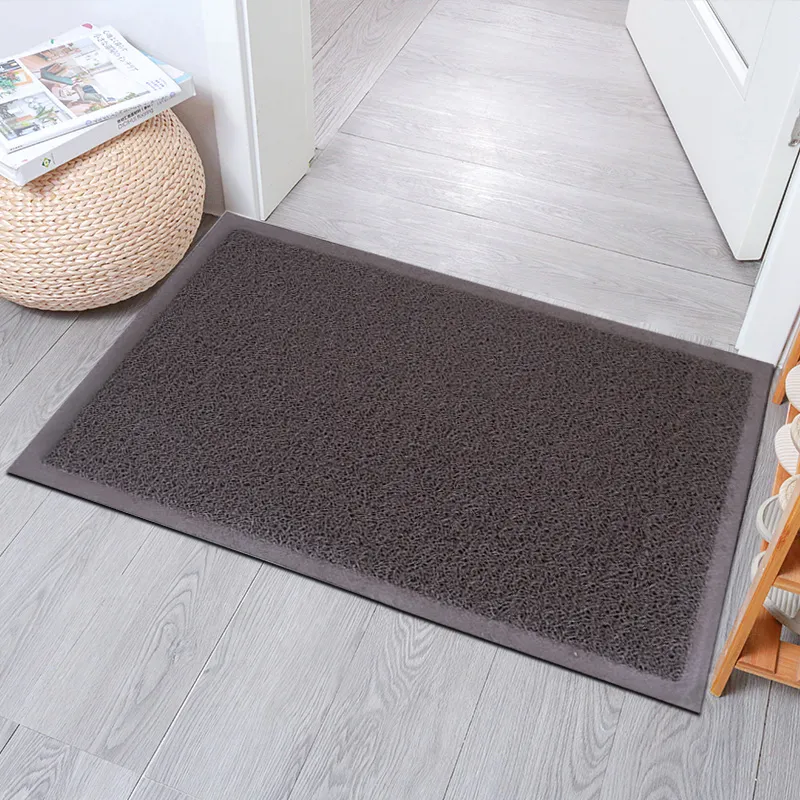
Furthermore, by trapping the bulk of the grime outside, the outdoor mat helps maintain better air quality inside. Less dust and dirt brought indoors means fewer airborne particles circulating. For businesses, a clean entrance maintained by a quality outdoor door mat presents a more professional and welcoming image. It shows attention to detail and care for the premises. Ultimately, the relatively small investment in a good outdoor mat pays significant dividends in maintaining a cleaner, healthier, and more welcoming entrance to your home or business.
What are the Benefits of Using Indoor Mats in the Entryway?
While the outdoor mat handles the initial heavy scraping, indoor mats placed in the entryway offer distinct and complementary benefits. Their primary role shifts from aggressive scraping to absorption and trapping finer particles. After wiping feet on the outdoor mat, some residual moisture and smaller bits of dirt and debris might remain. An absorbent mat inside, perhaps a mat made from cotton or microfiber, is specifically designed to soak up water from wet shoes and catch that lingering grit.
Indoor mats contribute significantly to protecting your interior floor coverings. Moisture tracked onto hardwood can cause warping or staining, while fine grit can act like sandpaper under foot traffic, dulling finishes and wearing down fibers. An absorbent indoor mat acts like a sponge, preventing water damage, and its fibers trap fine dust and sand, safeguarding your main floor. This is especially important in areas with frequent rain or snow. These mats are ideal for ensuring the longevity and appearance of expensive interior floor coverings. Consider effective Non slip PVC loop coil plain indoor mat options which combine trapping ability with crucial safety features.
Moreover, indoor mats often come in a wider variety of designs, colors, and softer materials compared to their rugged outdoor counterparts. This allows them to better integrate with your interior decor, adding a touch of style or warmth to the entryway. They provide a comfortable and clean surface to stand on while removing shoes, enhancing the transition from outside to indoors. Using indoor mats is the crucial second step in a comprehensive strategy for maintaining clean and safe floors.
Are Coir Doormats Better Suited for Outdoors?
Yes, coir doormats are generally much better suited for outdoor use. Coir, a natural fiber extracted from the husk of coconuts (made from coconut), possesses unique properties that make it highly effective as an outdoor mat material. Its rough, bristly texture is excellent for scraping dirt and mud from the soles of shoes. The stiff coir fibers act like tiny brushes, dislodging even stubborn debris before it gets tracked inside. This natural scraping ability is a key reason why coir mats are so popular for placing outside the door.
Coir is also naturally resistant to moisture and microbial growth to some extent, which is advantageous for a mat that will be exposed to the elements. While they can soak up water, they also dry relatively quickly and are less prone to developing mold and mildew compared to some other natural fibers, especially if they have good air circulation. This durability against varying weather conditions makes coir doormats a practical choice for an external mat.
However, it’s worth noting that coir mats do shed fibers, especially when new. This shedding is less of an issue outdoors than it would be indoors. While some people use coir mats inside, their rough texture isn’t always comfortable underfoot, and the shedding can create a bit of a mess indoors. Therefore, for optimal performance and placement convenience, natural coir mats truly excel as outdoor door mats, effectively fulfilling the role of a primary scraper mat at the entrance to your home. Their natural look also adds a rustic charm to the home entrance.
How Does a Two-Mat System (Indoor & Outdoor) Work Best?
A two-mat system, utilizing both an outdoor mat and an indoor mat, offers the most comprehensive solution for keeping your floors clean and protected. This strategy leverages the specific strengths of each mat type, creating a highly effective barrier against tracked-in dirt and moisture. The system works by assigning distinct roles to each mat at the entrance.
Visualizing the Effectiveness:
Imagine the amount of dirt entering without any protection as 100%. A typical system might perform as follows (results vary based on mat quality and conditions):
-
No Mat: 100% Dirt Entry
-
Outdoor Scraper Mat Only: Reduces dirt entry by approximately 50-65%. Catches coarse debris and some moisture.
-
Indoor Absorbent Mat Only: Reduces dirt entry by approximately 30-45%. Catches finer particles and absorbs water, but quickly overwhelmed without an outdoor mat.
-
Two-Mat System (Outdoor + Indoor): Reduces dirt entry by approximately 85-95%. The synergistic effect offers the best protection.
The outdoor mat serves as the first line of defense. Positioned outside the door, this mat is typically a tough scraper mat, often made from coir, rubber, or durable synthetic materials. Its primary function is to aggressively remove dirt, mud, leaves, snow, and other large pieces of debris from shoes and boots. It handles the initial, heavy cleaning job before anyone steps inside. This external mat needs to be weather-resistant and capable of handling significant wear and tear from foot traffic and the elements.
Once inside, the indoor mat takes over. This mat is usually placed directly inside the entryway and focuses on absorption and trapping finer particles. Often made from absorbent materials like cotton, microfiber, or specialized synthetic blends, it catches the residual moisture and finer dust that the outdoor mat might have missed. This absorbent mat helps prevent water damage to interior floor surfaces and traps the smaller grit that can scratch floors. Many indoor mats also feature a non-slip rubber backing or pvc or rubber backing to keep the mat securely in place and prevent accidents. Together, these two mats offer maximum protection, ensuring significantly less dirt and moisture make it further into your home or business. This is the gold standard for choosing doormats for effective floor care.
What Materials Make the Best Outdoor Doormats?
Selecting the right material is crucial for an effective outdoor doormat, as it needs to withstand weather conditions and effectively scrape away dirt and debris. Several materials excel in this role. Here’s a quick comparison:
| Material | Primary Strength | Durability | Weather Resistance | Best For | Example Product Link |
| Coir (Natural) | Excellent Scraping | Good | Moderate | Mud, Dry Debris | Often used in classic welcome mat designs |
| Rubber | Heavy Scraping, Drain | Excellent | Excellent | Mud, Snow, Heavy Traffic, Wetness | Provides excellent grip and durability |
| Synthetic (PP/Nylon) | Good Scraping/Absorb | Very Good | Excellent | All-Weather, High Traffic, Stains | See robust commercial anti slip outdoor herringbone front door mats |
| Combination | Balanced Performance | Varies (Good+) | Varies (Good+) | Versatile Applications | (Often Rubber Frame + Insert) |
-
Coir (Coconut Fiber): As previously discussed, natural coir is a top contender due to its stiff coir fibers.
-
Rubber: Rubber mats are extremely durable and often feature aggressive patterns. A rubber entrance mat provides excellent traction.
-
Synthetic Fibers (Polypropylene, Nylon): Highly durable, resistant to fading, mold and mildew, and quick-drying. Nylon offers good absorbency too.
-
Combination Mats: Combine materials, like coir inserts in a rubber frame, leveraging multiple strengths.
When choosing an outdoor mat, consider your specific climate and debris type. The key is durability and effective scraping for a mat that will be used outside.
What Should You Look for in an Indoor Entryway Mat?
While the outdoor mat focuses on scraping, the indoor mat prioritizes absorption and trapping finer particles, while also complementing your interior space. Here’s what to look for in an effective indoor entryway mat:
-
Absorbency: Paramount for handling moisture from wet shoes. Materials like cotton and microfiber excel here. Some synthetic options, like those used in our nylon printed door mats, can also offer good performance and durability.
-
Dirt Trapping: Should catch fine dust and grit. Looped or plush pile constructions work well.
-
Non-Slip Backing: Essential for safety indoors. A quality rubber backing or pvc or rubber backing prevents movement.
-
Low Profile: Avoids tripping hazards and allows door clearance.
-
Washability: Needs regular cleaning; machine-washable options offer convenience.
-
Style: Complements interior decor. Wide range of designs available.
An ideal indoor mat effectively manages residual dirt and water while being safe, easy to maintain, and aesthetically pleasing. It’s the final touch in ensuring your home clean campaign starts right at the door.
How Do Welcome Mats Enhance Your Home’s Entrance?
Beyond their practical cleaning functions, welcome mats play a significant aesthetic role, acting as the perfect finishing touch for your home entrance. The mat at the entrance is one of the first things visitors see, contributing significantly to the overall first impression. As renowned interior designer Emily Henderson states, “The entryway sets the tone for the entire home. A stylish doormat is a small detail that makes a big impact, instantly signaling ‘welcome’ and care.” A well-chosen doormat can instantly make an entrance feel more inviting, polished, and cared for.
The word “welcome” itself, often emblazoned on these mats, sets a positive tone. But even without words, the style, color, and condition of the mat communicate something about the occupants. A clean, stylish mat suggests attention to detail and pride in one’s space. Conversely, a worn-out, dirty doormat can detract from even the most beautiful exterior door. Welcome mats offer an easy and affordable way to boost curb appeal.
Furthermore, doormats for your home allow for personalization. From elegant monograms to quirky designs like popular factory wholesale pvc coil hello door mats, humorous messages, or seasonal themes, a welcome mat provides an opportunity to express personality right at the doorstep. As custom mat manufacturers, we frequently work with clients – from Retail Chains and E-commerce Sellers to Promotional Product Companies and Private Label Brands – to create unique designs. The right mat enhances the entrance to your home, making it more welcoming.
Choosing the Right Size and Style: Considerations for Your Doormat
Selecting the perfect mat involves more than just picking a material; size and style are crucial for both functionality and aesthetics. An improperly sized doormat can look awkward and be less effective.
Sizing Guide:
-
Standard Single Door (30-36″): Mat should be ~22-24″ deep and 30-36″ wide (at least 80% of door width).
-
Wider Doors / Double Doors: Require a larger mat (e.g., 24-36″ deep and 48-60″ wide) for proper coverage. Ensure people naturally step on the mat.
The style of the doormat should complement the architecture and decor:
-
Traditional: Classic coir, patterned rubber, elegant designs.
-
Modern: Sleek geometrics, solid colors, minimalist rubber, or consider options like our stylish 3D embossed door mats for a contemporary look.
-
Rustic: Natural coir, braided styles, nature themes.
-
Business: Durable, functional, possibly branded. Heavy-duty materials for heavy foot traffic.
When choosing doormats, consider function and form. As manufacturers catering to diverse clients like Importers, Hotel Suppliers, and Retail Chains, we offer extensive customization. Getting the size and style right ensures your new doormat is both effective and enhances visual appeal.
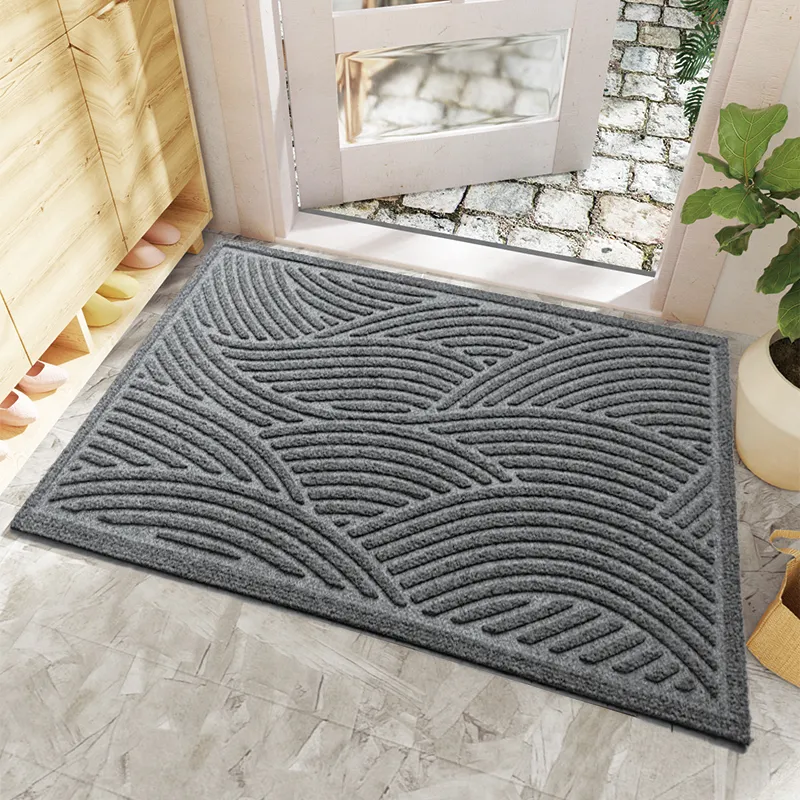
Maintaining Your Mats: Keeping Them Effective and Looking Good
Even the best door mat will lose its effectiveness if not properly maintained. Regular cleaning is essential.
Mini Case Study: The Busy Cafe
-
Problem: “The Busy Bean Cafe” constantly battled muddy floors near the entrance on rainy days, requiring frequent mopping and causing slip concerns. Their single, worn mat was ineffective.
-
Solution: We advised implementing a two-mat system. They installed a durable rubber mat outside (heavy scraping) and a large, absorbent mat with non-slip backing inside.
-
Result: The cafe reported a significant reduction in tracked-in dirt and moisture, cutting down floor cleaning frequency by nearly 70% during wet weather. Staff also noted fewer near-miss slips, improving safety. The cleaner entryway enhanced their first impression.
General Cleaning Tips:
-
Outdoor Mats (Coir, Rubber, Synthetic): Shake out regularly. Brush off dried mud. Hose down rubber/synthetics and air dry. Avoid soaking coir excessively; dry thoroughly if wet.
-
Indoor Mats (Absorbent): Vacuum frequently. Check care labels – many are machine washable. Spot clean spills quickly. Ensure non-slip backing remains effective.
Proper care ensures your investment in quality mats continues to provide benefits in cleanliness and safety.
Partnering with a Custom Mat Manufacturer: Your Needs, Our Expertise
As experienced custom mats manufacturing plants, we understand the diverse needs of our clients, from Importers and Distributors of Home Furnishings to Pet Product Brands and Flooring Product Wholesalers. You require reliable, high-quality floor mats that meet specific functional and aesthetic demands. Whether for Hotel and Hospitality Suppliers, Retail Chains, Online E-commerce Sellers, or Private Label Brands Seeking Custom Mats Production, we deliver.
We offer customizable solutions:
-
Size: Standard to oversized (large mat formats).
-
Materials: Natural coir, rubber, synthetics, eco-friendly options.
-
Features: Non-slip backings (rubber backing, PVC backing), varied textures.
-
Design: Custom colors, patterns, logos (ideal for Promotional Product Companies).
Choosing the right partner is crucial. We offer quality control, scalability, competitive pricing, and expertise in mat technology, from basic welcome mats to specialized items. Seeking a reliable source for innovative mats for your home, commercial, or specialty markets? Contact us. Let’s discuss how our capabilities can meet your requirements and help you provide the perfect mat solutions.
Frequently Asked Questions (FAQs)
How often should I replace my doormat?
Lifespan depends on material, traffic, and weather. Inspect regularly. Replace if worn down, shedding excessively, or ineffective at trapping dirt and debris. Quality outdoor mats may last years; indoor ones when absorbency/backing fails.
Can coir mats get wet?
Yes, coir mats handle moisture well but need thorough drying to prevent degradation or mold and mildew. They are best used outside.
What’s the best mat for heavy rain or snow?
Rubber mats or quick-drying synthetics with drainage channels, like some commercial anti slip outdoor designs, are excellent outdoor door mats for heavy wetness. Pair with an absorbent mat indoors.
Are rubber mats eco-friendly?
The eco-friendliness of rubber mats varies. Some are made from recycled rubber tires. Manufacturing new synthetic rubber can be resource-intensive. Look for recycled content labels.
Can I customize a welcome mat design?
Absolutely! As custom mat manufacturers, we offer extensive customization in design, size, color, and branding for various clients and needs, including options like printed door mats or embossed styles.
What size mat do I need for a standard door?
For a 30-36 inch door, aim for a mat around 22-24″ deep and 30-36″ wide (covering at least 80% of the width). Measure for the best fit.
Key Takeaways:
-
Placement is Key: Primary welcome mat (doormat) goes outside the entrance for scraping.
-
System Advantage: A two-mat system (outdoor scraper + indoor mat absorber) offers the best protection (~85-95% dirt reduction).
-
Material Matters: Choose outdoor mat materials (e.g., coir, rubber, synthetics like those in commercial anti slip outdoor mats) for scraping/durability; indoor mats for absorbency/non-slip features (e.g., PVC loop coil or nylon).
-
Multifunctional: Mats clean, protect floors, improve safety, and enhance entrance aesthetics (consider stylish 3D embossed or hello door mats).
-
Sizing Right: Ensure mat width is at least 80% of the door width for effectiveness.
-
Care Counts: Regular cleaning preserves mat effectiveness and lifespan.
-
Customization Available: We manufacture custom mats to meet diverse client needs across various industries. Contact us for your specific requirement

